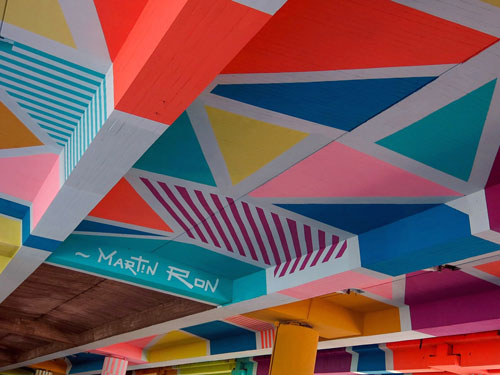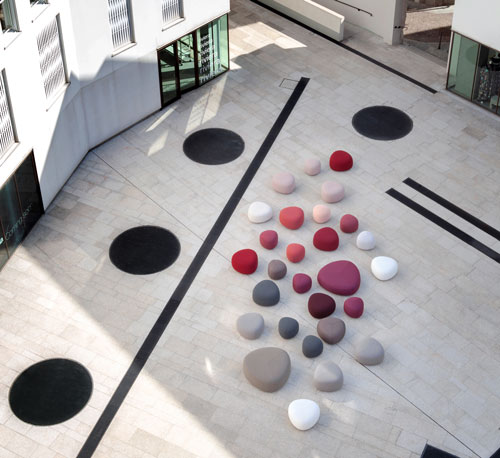SOTTO LA STRADA
UNDER THE ROAD
STREET ART | BUENOS AIRES
Martín Ron è uno street painter molto attivo, che sta trasformando l’identità dei paesaggi periferici attraverso segni molto forti.
Egli è autore di varie installazioni permanenti lungo l’Avenida General Paz, nei punti in cui questo cavalcavia urbano crea complicati grovigli in corrispondenza con altre arterie di Buenos Aires. Più precisamente, gli interventi di Ron, avvenuti con finanziamento pubblico, riguardano il sottofondo delle carreggiate multiple. L’artista ha voluto cambiare magicamente il luogo, che le persone esplorano, percepiscono in una chiave insolita, stabilendo sul piano visivo un’interazione del tutto nuova.
Qui Ron abbandona momentaneamente il proprio mondo figurativo a favore di un mood astratto-geometrico. Strisce nere o grigio chiaro definiscono zone altamente cromatiche, quasi a rispecchiare la dinamicità veicolare che sta al di sopra.
Martín Ron is a very active street painter who is transforming the identity of peripheral landscapes through very strong signs.
He is the author of various permanent installations along Avenida General Paz, at the points where this urban overpass creates complicated tangles in correspondence with other arteries of Buenos Aires. More precisely, Ron’s interventions, which took place with public funding, concern the background of multiple carriageways. The artist wanted to magically change the place, which people explore, perceive in an unusual key, establishing a completely new interaction on the visual level.
Here Ron temporarily abandons his own figurative world in favor of an abstract-geometric mood. Black or light gray stripes define highly chromatic areas, almost reflecting the vehicular dynamism that lies above.






























